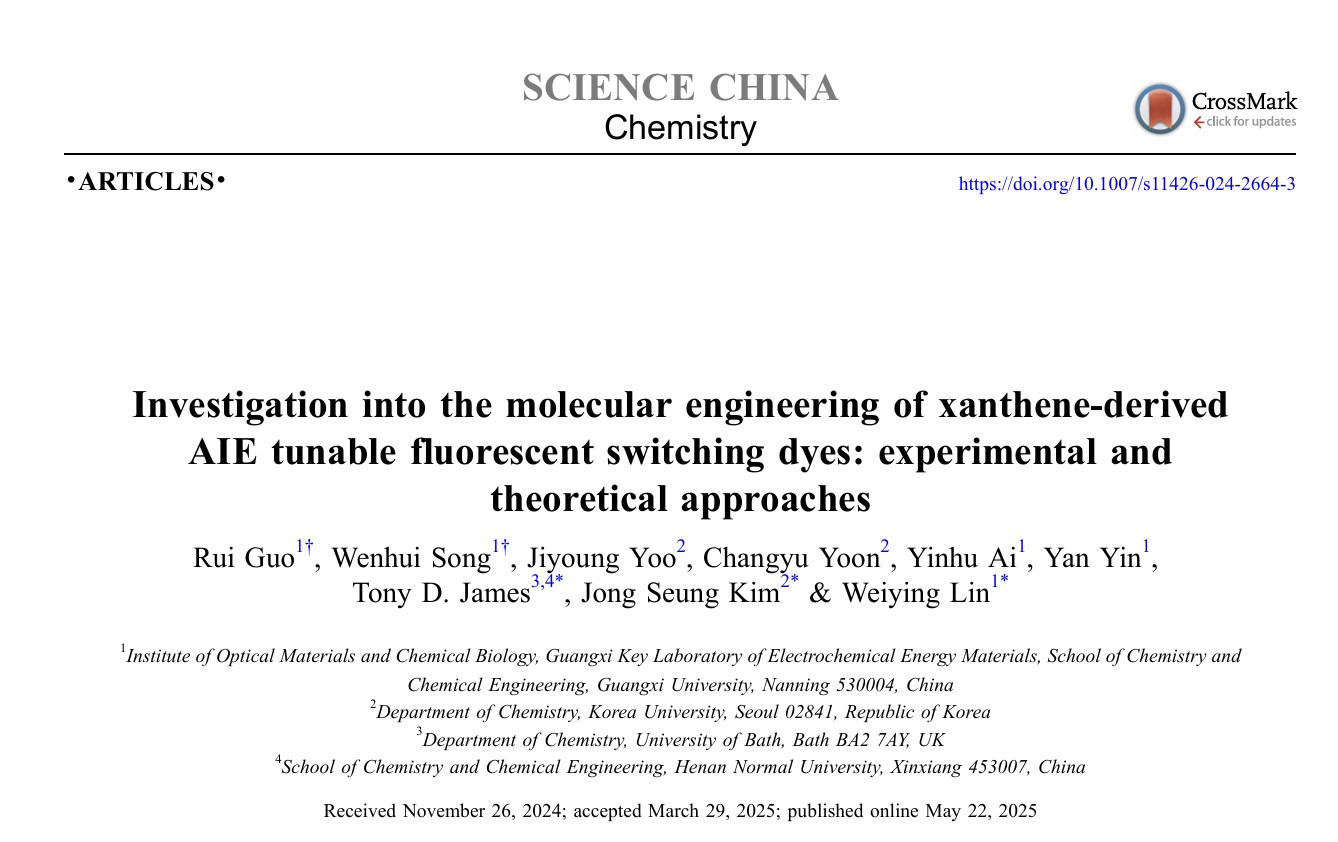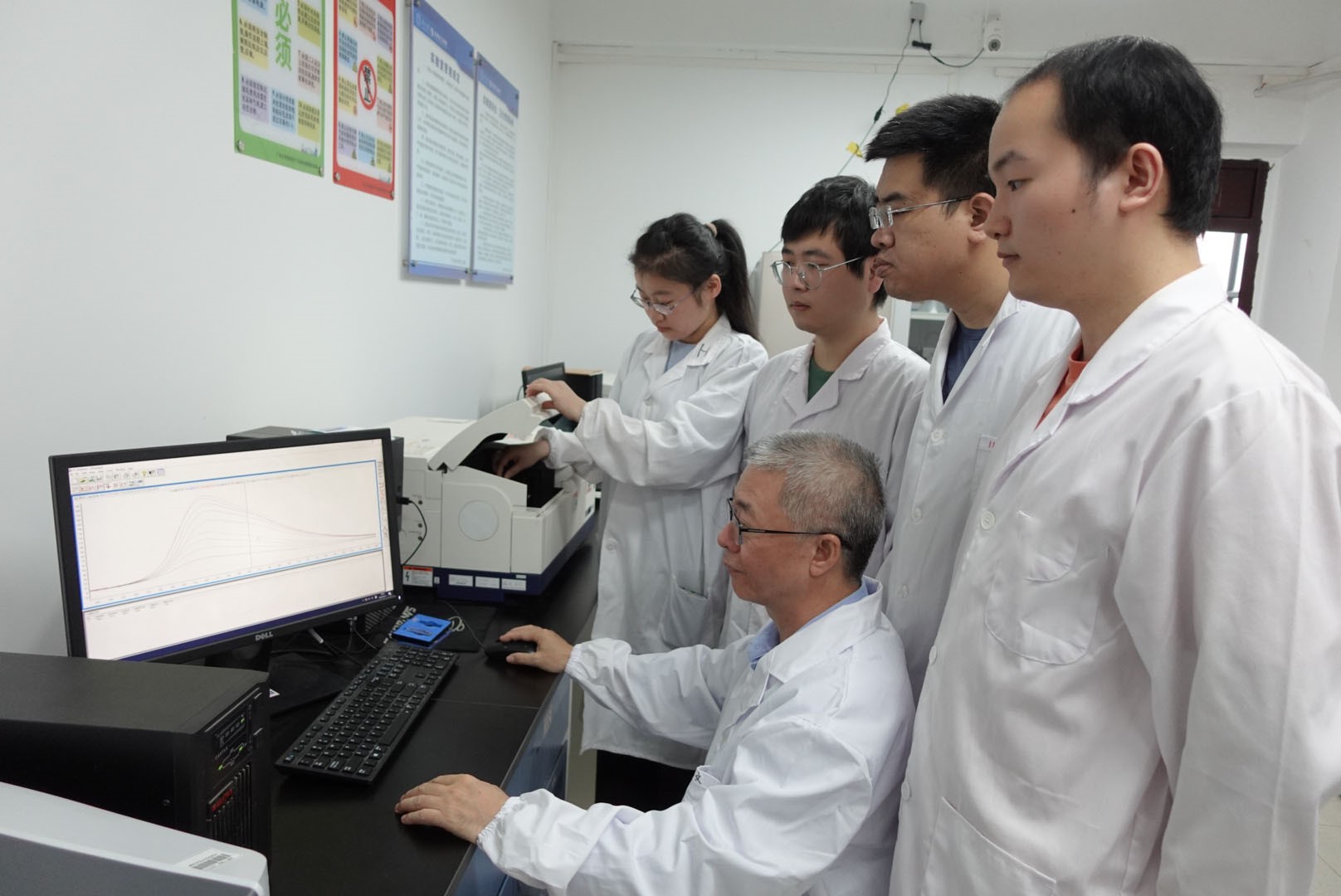Recently, the Probe and Chemical Biology team from the School of Chemistry and Chemical Engineering of Guangxi University(GXU) has achieved new breakthroughs in the development of novel AIE dyes. The related findings were published in the international academic journal Science China Chemistry under the title "Investigation into the molecular engineering of xanthene-derived AIE tunable fluorescent switching dyes: experimental and theoretical approaches". The first authors of this paper are Associate Professor Guo Rui and doctoral candidate Song Wenhui from the School of Chemistry and Chemical Engineering, with Professor Lin Weiying as the corresponding author. GXU is the first corresponding unit.

Different from traditional luminescent materials, AIE dyes typically exhibit weak or no fluorescent emission in dilute solutions but show enhanced fluorescence in aggregated or solid states. This characteristic effectively overcomes the limitation of traditional fluorescent dyes prone to fluorescence quenching in aggregated states, endowing them with unique application potential in biomedical imaging, photoelectric materials, and other fields. However, traditional AIE molecules still have certain limitations in the regulation of fluorescent switching, making the development of structurally tunable and stable fluorescent dyes an urgent need in this research field.
To address the above challenges, the research team designed and synthesized a new class of AIE molecules named "XD dyes", which achieved key breakthroughs in the following aspects: 1.Unique molecular structure: XD dyes break through the conventional conjugate system model of AIE dyes with multiple intramolecular free rotation degrees, achieving fluorescence enhancement through a spiral cyclization structure. This structural design not only improves molecular stability but also provides a new control measure for their fluorescent properties in aggregated states. 2. Application of Heteroanthracene skeleton: As AIE molecules with Heteroanthracene as the core skeleton, XD dyes demonstrate significant advantages in both structure and performance. Among them, XD-4 dye is particularly outstanding, exhibiting remarkable solid-state fluorescence and crystal-induced fluorescence enhancement. This discovery opens up a new direction for the application of Heteroanthracenes in materials science and further expands the application boundary of AIE molecules.
Unlike traditional AIE fluorophores, the innovative XD dyes feature intact carboxyl groups, a unique structural characteristic that allows direct regulation of their fluorescent properties through spiral cyclization. Aiming at the significant differences in molecular structure between the newly developed XD dyes and traditional AIE dyes, the research team adopted an interdisciplinary approach combining experimental methods and theoretical calculations to systematically explore the mechanism of their AIE performance and deeply elucidate their structural features and aggregation behavior. Experimental results show that XD dyes exhibit high fluorescent emission and obvious aggregation in aqueous solutions, indicating their typical AIE characteristics. Furthermore, compound XD-4 shows crystal-induced luminescence enhancement and also displays fluorescence in both solid and crystalline states.
This study also explores the potential of spiral cyclization of XD dyes as tunable fluorescent switches in the development of biological fluorescent probes. In terms of theoretical calculations, this research uses quantum chemical calculations and molecular dynamics simulations to deeply explore the AIE properties of XD dyes. The combined results of quantum chemical calculations and molecular dynamics simulations show that XD-4 has red-shifted absorption and emission spectra, high emission quantum efficiency in aqueous solutions, and can aggregate in aqueous solutions on a nanosecond time scale, further supporting the view that XD dyes have typical AIE properties theoretically. Based on the comprehensive experimental data and theoretical calculations, XD dyes exhibit unique AIE properties, with their structural characteristics and fluorescence regulation mechanisms showing significant differences from conventional AIE dyes. These innovative XD dyes possess easily adjustable fluorescence switches, demonstrating distinct advantages over traditional AIE dyes and holding important research value in the field of dye chemistry.
The achievements of this study open up a new path for the development of the field of dye chemistry, lay the foundation for creating novel fluorescent dyes and probes, and demonstrate broad application prospects in multiple fields such as chemistry, biology, and medicine.
